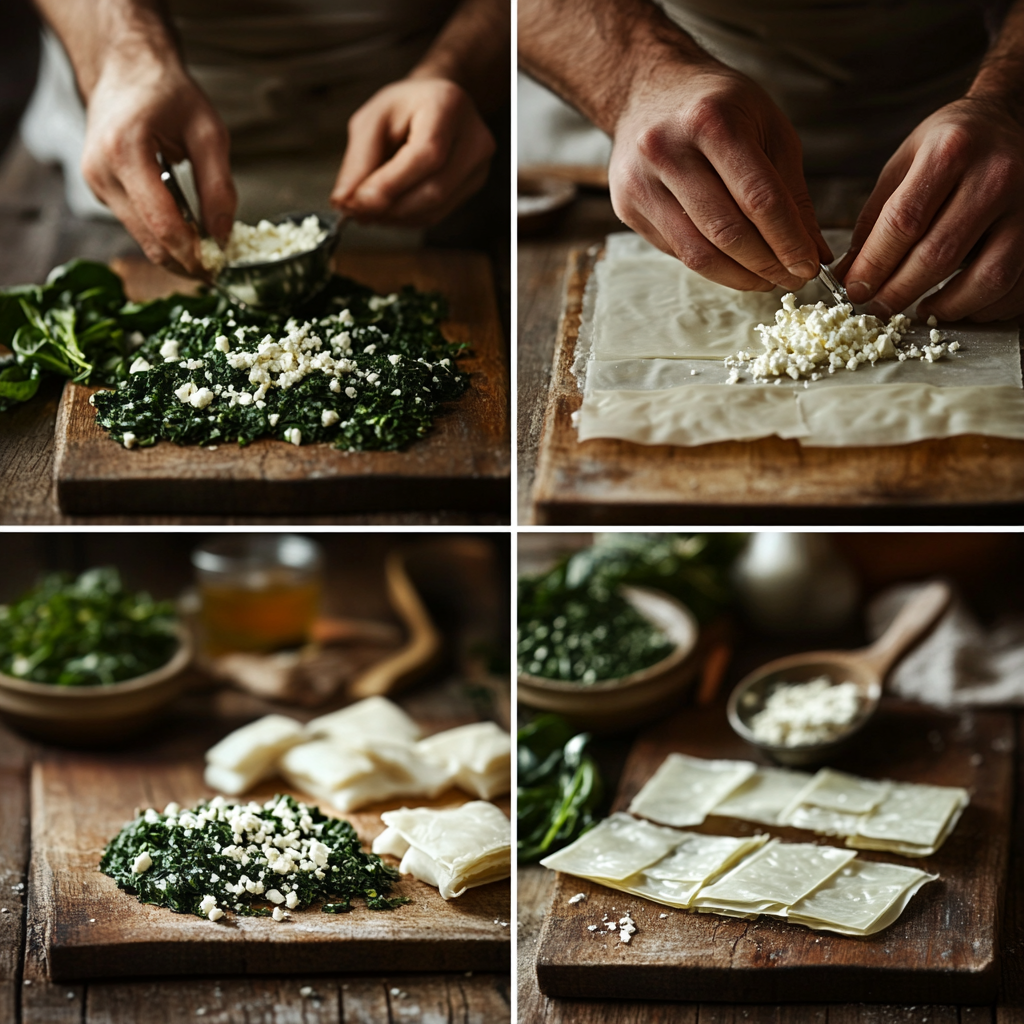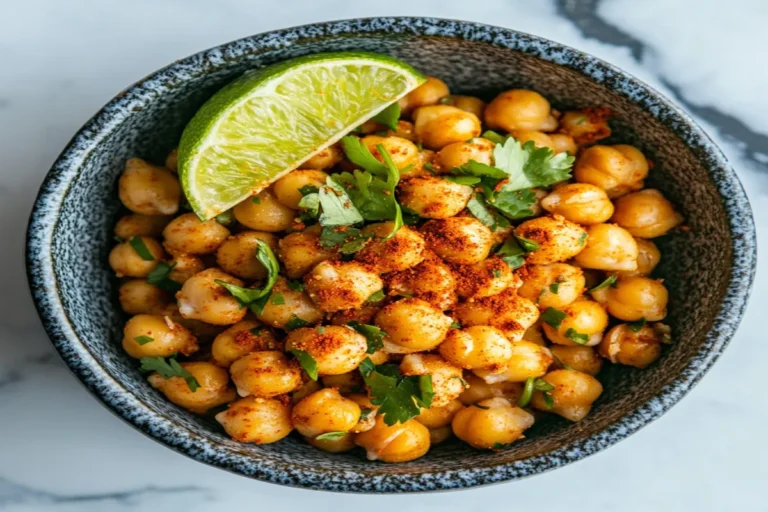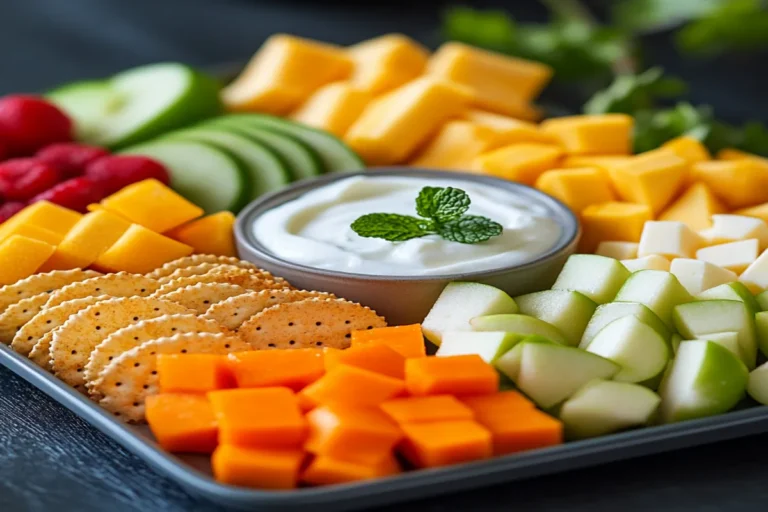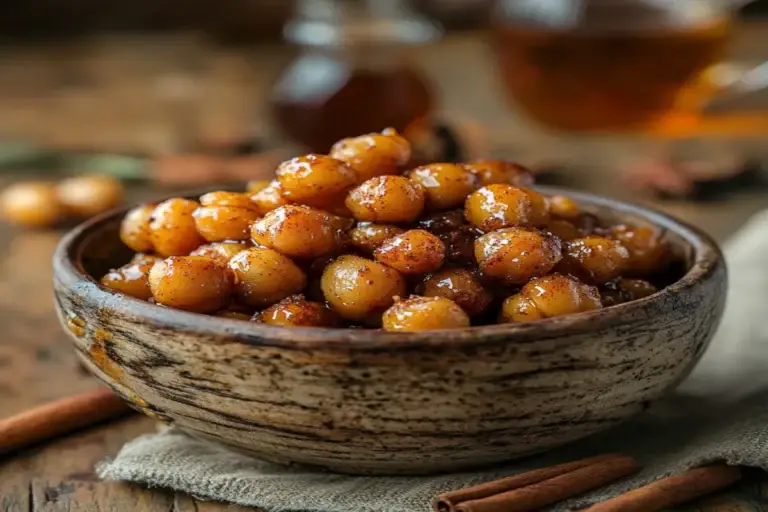Easy Spinach and Feta Phyllo Triangles – Crispy Appetizer
Table of Contents
There’s something irresistible about biting into a warm, crispy spinach and feta triangle. That satisfying crunch of golden phyllo giving way to a savory, herb-infused filling has made these triangular treats a favorite at dinner parties, family gatherings, and casual weeknight meals alike. Whether you call them spanakopita triangles or simply spinach pies, these Mediterranean-inspired appetizers strike the perfect balance between convenience and sophistication.
The marriage of wilted spinach, tangy feta, and aromatic herbs wrapped in paper-thin phyllo pastry creates a symphony of textures and flavors that has stood the test of time. Originating from the sun-drenched shores of Greece, these triangles have found their way onto tables across the globe, winning hearts with each flaky bite.
In this guide, we’ll explore everything you need to know about creating restaurant-quality spinach and feta triangles in your own kitchen. Whether you’re preparing appetizers for guests, packing lunch boxes, or simply craving a satisfying snack, these versatile pastries never disappoint.
What Are Spinach and Feta Triangles?
At their core, spinach and feta triangles are individual portions of spanakopita, a traditional Greek savory pie. While spanakopita is often prepared as a large pie cut into squares or slices, the triangular format offers the perfect handheld alternative that maximizes the crispy-to-filling ratio that pastry lovers crave.
These triangles hold an esteemed place in Greek culinary tradition, where they’re served at everything from casual tavernas to elaborate family celebrations. The combination of spinach and cheese reflects the Mediterranean diet’s emphasis on fresh vegetables and dairy, wrapped in phyllo—a pastry technique perfected over centuries.
Beyond Greece, variations of these savory parcels appear throughout the Mediterranean and Middle East, sometimes taking the form of spiraled rolls, rectangular packets, or even circular pies. The triangle shape, however, remains particularly beloved for its elegant presentation and the way it creates multiple crispy edges while sealing in the filling perfectly.
Ingredients Breakdown
Phyllo Pastry
The foundation of any good spinach and feta triangle is ultra-thin, delicate phyllo dough. Unlike puff pastry, phyllo doesn’t contain butter within its layers—instead, each sheet is typically brushed with melted butter or olive oil during assembly. This creates the characteristic shatteringly crisp texture that perfectly complements the soft filling. Store-bought phyllo is widely available in the freezer section of most supermarkets and saves considerable time without compromising quality.
Spinach
While fresh spinach delivers bright flavor, frozen spinach offers convenience and consistency. If using fresh, you’ll need about three times the volume of frozen since spinach reduces dramatically when cooked. Whichever type you choose, ensuring proper moisture removal is crucial—excess water leads to soggy pastry. For fresh spinach, thoroughly wilt it down in a hot pan, then allow it to cool before squeezing out moisture. For frozen, thaw completely and press between paper towels or in a clean kitchen towel.
Feta Cheese
Traditional Greek feta, made from sheep’s milk or a sheep-goat milk blend, provides the signature tangy, briny flavor that defines these triangles. True Greek feta has a crumbly yet creamy texture and contains just the right amount of salt to season the entire filling. For best results, purchase blocks packed in brine rather than pre-crumbled varieties, which often contain anti-caking agents that affect texture and flavor.
Additional Cheeses
Many cooks enhance the filling with a secondary cheese for depth and richness. A sprinkle of sharp Parmesan adds umami notes, while creamy ricotta mellows the assertiveness of the feta while adding moisture. These complementary cheeses aren’t traditional but can elevate the overall experience.
Herbs and Aromatics
The aromatic foundation begins with sautéed onions and garlic, providing a sweet, savory base that permeates the filling. Fresh dill delivers distinctive Mediterranean character, while flat-leaf parsley contributes bright, clean notes. Green onions add complexity without overwhelming the delicate spinach flavor. These aromatics transform simple ingredients into something truly special.
Binders and Seasonings
Lightly beaten eggs bind the filling components together, preventing them from spilling out during baking while adding richness. Black pepper, a light touch of salt (keeping in mind feta’s natural saltiness), and perhaps a whisper of nutmeg round out the flavor profile. Some cooks add a pinch of red pepper flakes for subtle warmth without overwhelming heat.
Step-by-Step Preparation Of Spinach and Feta Triangles

Preparing the Filling
Begin by heating olive oil in a large skillet over medium heat. Add finely diced onions and cook until translucent, about 3-4 minutes, then add minced garlic and cook for another 30 seconds until fragrant. For fresh spinach, add it gradually to the pan, turning frequently until completely wilted. For frozen spinach, ensure it’s fully thawed and squeezed dry before adding to the softened aromatics.
Remove the spinach mixture from heat and allow it to cool slightly. In a large bowl, crumble the feta cheese, add any additional cheeses, chopped herbs, and the cooled spinach mixture. Season with black pepper and other desired spices, then fold in beaten eggs until evenly incorporated. Your filling should be moist enough to hold together but not wet or runny.
Working with Phyllo Dough
The key to phyllo success is preparation. Before unwrapping your dough, gather all other ingredients and tools. Create a workstation with a clean, dry surface, melted butter with a pastry brush, and a damp (not wet) kitchen towel to cover unused sheets. Work quickly but carefully—phyllo waits for no one and dries out rapidly when exposed to air.
Assembling the Triangles
Lay one sheet of phyllo on your work surface, brush lightly with melted butter, and top with a second sheet. Cut the stacked sheets lengthwise into 3-4 equal strips. Place a tablespoon of filling at the bottom of each strip, then fold the corner over to create a triangle. Continue folding in a flag-folding pattern until you reach the end of the strip. Brush the outside with butter and place on a parchment-lined baking sheet. Repeat with remaining phyllo and filling.
Baking to Golden Perfection
Preheat your oven to 375°F (190°C). Once all triangles are assembled, brush the tops with a final coat of butter or olive oil for maximum browning. Bake for 20-25 minutes, until deeply golden and crisp. Allow them to cool slightly before serving—the filling retains heat much longer than the pastry.
Tips for Perfect Spinach and Feta Triangles
The secret to phyllo mastery is managing moisture—both in the dough and filling. Keep phyllo sheets covered with a slightly damp towel while working, but never allow the towel to become too wet, which can make sheets sticky and difficult to separate.
Ensure your filling isn’t watery by properly draining spinach. Test by squeezing a small amount in your palm—if liquid streams out, continue draining. The ideal consistency should hold together when pressed without releasing excess moisture.
For maximum flakiness, don’t skimp on brushing each layer with butter or oil. This not only adds flavor but creates those delectable, distinct layers that shatter pleasingly when bitten.
Make weeknight dinners easier by preparing a large batch on weekends. Freeze unbaked triangles in a single layer until solid, then transfer to freezer bags for storage up to three months. Bake straight from frozen, adding just a few extra minutes to the cooking time.
Variations and Customizations
While traditional spinach and feta filling is unbeatable, numerous delicious variations exist. Consider swapping some feta for tangy goat cheese or mild mozzarella. For additional texture and flavor, incorporate sautéed mushrooms, chopped sun-dried tomatoes, or kalamata olives.
Those following plant-based diets can create vegan versions using dairy-free feta alternatives and replacing eggs with a mixture of olive oil and nutritional yeast. The results are surprisingly authentic while accommodating different dietary preferences.
Serving Suggestions For Spinach and Feta Triangles
These versatile triangles pair beautifully with a variety of accompaniments. Serve alongside creamy tzatziki for cooling contrast, or with zesty hummus for a complementary Mediterranean touch. A simple yogurt sauce infused with lemon zest, garlic, and fresh herbs makes an elegant dipping option that enhances without overwhelming.
For a complete meal, serve warm triangles with a bright Greek salad of tomatoes, cucumbers, and olives dressed in lemon and olive oil. Alternatively, a simple tomato soup transforms these pastries into a satisfying lunch or light dinner.
These triangles truly shine as party fare—they can be made ahead, look impressive on a platter, and stay delicious at room temperature for hours. They’re equally at home at upscale cocktail gatherings or casual weekend picnics. Pack them in lunch boxes for an upgrade from ordinary sandwiches, as they travel remarkably well.
Storage and Reheating Tips
Leftover baked triangles will maintain their quality for up to three days when stored in an airtight container in the refrigerator. To maintain their crispy texture, avoid stacking them, or place parchment paper between layers.
The freezer is your friend when it comes to spinach triangles. Assemble them completely, then freeze unbaked triangles on a baking sheet until solid. Transfer to freezer bags, where they’ll keep for up to three months. When ready to enjoy, simply bake from frozen—no thawing required—adding about 5-7 minutes to the original baking time.
For reheating previously baked triangles, the oven is vastly superior to the microwave. A few minutes at 350°F (175°C) restores their crisp exterior. Microwaving, while quick, will inevitably compromise the texture, leaving you with soggy pastry—a culinary disappointment worth avoiding.
Frequently Asked Questions
Can I use puff pastry instead of phyllo? Yes, though the result will be quite different. Puff pastry produces a thicker, more substantial crust with a different flaky texture. The filling-to-pastry ratio will shift dramatically, and the distinctive layered crispness of traditional spanakopita will be lost. That said, puff pastry triangles are delicious in their own right—just don’t expect the same ethereal quality that phyllo provides.
How do I prevent the spinach and feta triangles from opening during baking? Proper sealing is essential. Ensure the final fold creates a clean edge, then press gently but firmly to seal. For extra insurance, brush a tiny amount of egg wash or water along the final edge before completing the fold. The moisture creates a natural adhesive that bakes into a secure seal.
Can I make these gluten-free? Absolutely. Gluten-free phyllo dough is available in well-stocked specialty stores and online retailers. While slightly more delicate to work with than traditional phyllo, it performs admirably when handled with care. The filling components are naturally gluten-free, making this an excellent option for guests with gluten sensitivities.
Final Thoughts
Spinach and feta triangles represent the best of Mediterranean cuisine—simple, fresh ingredients transformed through thoughtful preparation into something greater than the sum of their parts. The contrast between crispy exterior and savory filling creates an irresistible bite that has earned these triangles a permanent place in global appetizer repertoires.
Don’t be intimidated by working with phyllo—with a little practice, you’ll develop the confidence to create these impressive morsels with ease. Feel free to adapt the recipe to your taste, incorporating favorite herbs or adjusting cheese proportions to suit your palate.
We’d love to see your creations! Share photos of your spinach and feta triangles on social media, tag us, and subscribe to our newsletter for more Mediterranean-inspired recipes that bring sunshine to your table, no matter the season.







